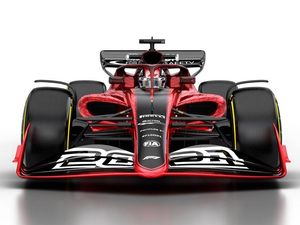Formula 1’s drastic 2021 rule change explained
Closer racing promised as F1 overhauls rulebook – and introduces cost cap for the first time

Despite the dominance of Lewis Hamilton and his Mercedes AMG Petronas team, the 2019 Formula 1 season has been one of the best in recent memory – certainly of the hybrid era.
However, the current set of technical regulations – the rules that dictate how the sport works – has faced plenty of justifiable criticism. Chief among them being the fact that cars can’t follow closely, making races less exciting, while the three top teams of Mercedes, Ferrari and Red Bull Racing are so far ahead it makes race results predictable and boring.
That’s why the newly announced rule changes, set to be implemented for the start of the 2021 season, have been so highly anticipated by F1 fans – it’s a chance to shake up the grid and improve competition.
Jean Todt, president of the FIA, F1’s governing body, said: “It is a major change in how the pinnacle of motor sports will be run, and for the first time, we have addressed the technical, sporting and financial aspects all at once.
“The 2021 regulations have been a truly collaborative effort, and I believe this to be a great achievement. A crucial element for the FIA moving forward will be the environmental considerations – Formula 1 already has the most efficient engines in the world, and we will continue to work on new technologies and fuels to push these boundaries further.”
Now that the rules have been confirmed in principle, let’s take a look at F1’s plans to make the on-track action more competitive…
Revised aerodynamics to improve close racing

F1 has openly admitted that in its pursuit to have the fastest cars on Earth, it has sacrificed good racing.
The current cars achieve such huge levels of downforce that they create large amounts of ‘dirty air’ in their wake. This reduces the ‘clean air’ running over the wings of the car behind, reducing downforce and slowing the following car down. It means drivers often can’t get close to rivals to attempt an overtake.

The new rules focus heavily on reducing that dirty air by using simpler wings, increased use of ground effect (which uses Venturi tunnels under the car to create downforce in a way that doesn’t disrupt airflow behind as much) and introducing devices that reduce dirty airflow created by tyres.
In simulations, F1 says the current cars lose about half of their downforce when following closely behind another car, compared with a claimed 15 per cent for 2021 cars.
Cost cap
To address the issue of ‘the big three’ spending their way to the front of the grid, F1 is introducing a spending cap of $175 million (£135m). This is a bit more than the average mid-field team currently spends, but a bit less than the top teams.
The idea is that those with huge budgets can’t just buy their way to the front, instead having to be clever with their spending, while those further down the grid don’t feel like closing the gap is hopeless. It also hopes to encourage new teams to join.

However, back when Bernie Ecclestone ran F1, he gave the teams a lot of power to veto rule changes. Naturally, Mercedes, Ferrari and Red Bull have been keen to keep their advantage, so compromises have been made to the cost cap in order to get it implemented.
For example, driver salaries and the salaries of the top three staff members do not contribute towards the cap.
Wind tunnel testing reduced
Another way to keep racing close over the course of a season has been to reduce the amount of time teams can spend in wind tunnels developing their car’s aerodynamics.
Coupled with the cost cap, F1 hopes this will reduce the chances of a team simply developing its way to the front of the grid, while also making practice sessions at each grand prix more important.
Shorter race weekends

To reduce the strain on team personnel, the race weekend will no longer take place from Thursday to Sunday. Instead, practice sessions and the driver conferences will start on the Friday, giving teams another day off between races.
This may also allow for more events to be added to the calendar, with the regulations stating that up to 25 races could be on the schedule in the future.
Everything else

While these are the headline announcements, the regulations are complex and wide-ranging. Other changes include 18-inch alloy wheels shod in new Pirelli tyres, rules around how teams interact with the media, reductions in the number of parts that can be modified from standard and a rule designed to give promising young drivers experience in F1 cars.





